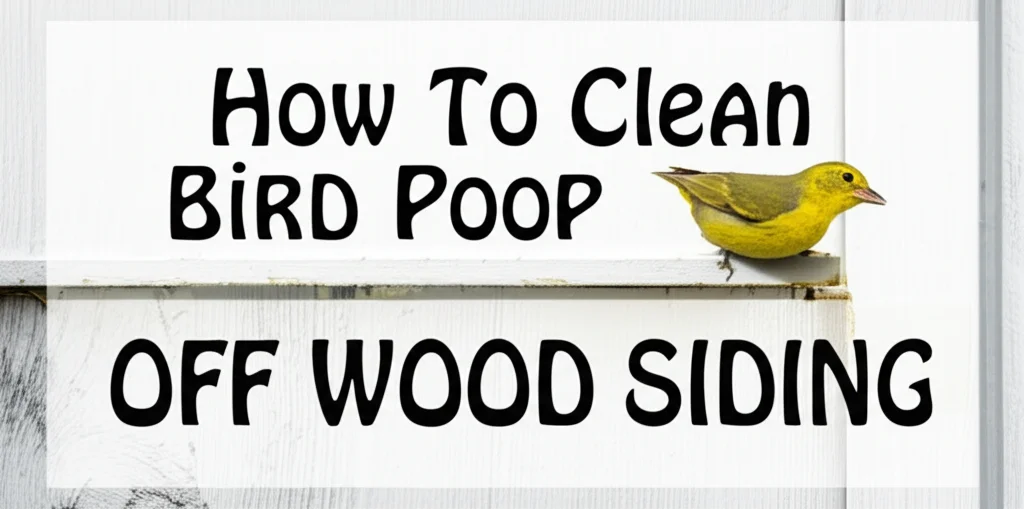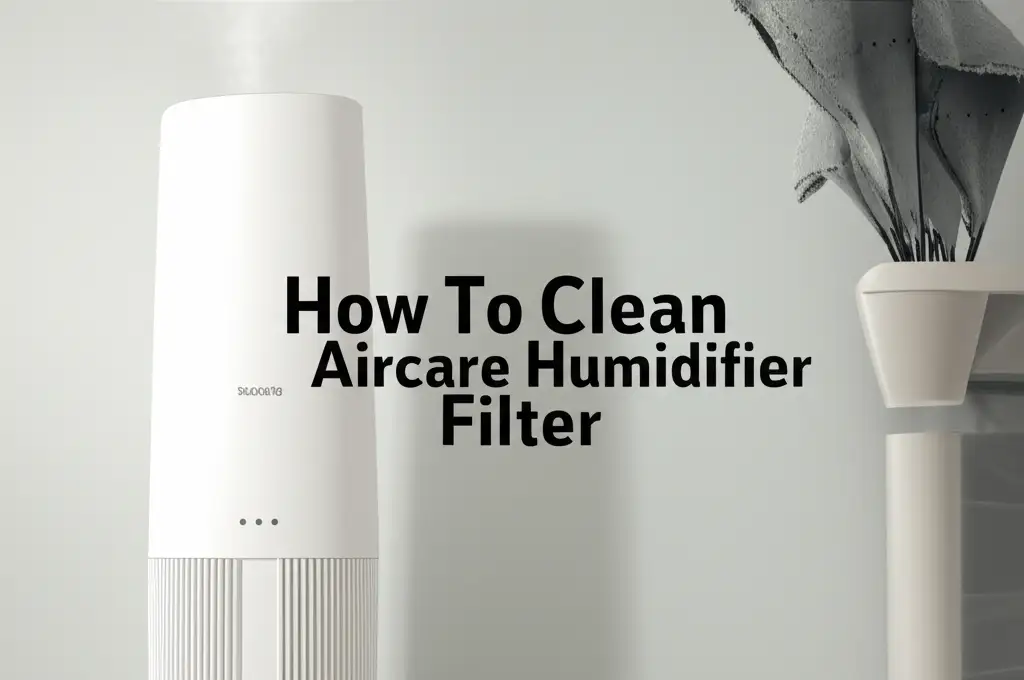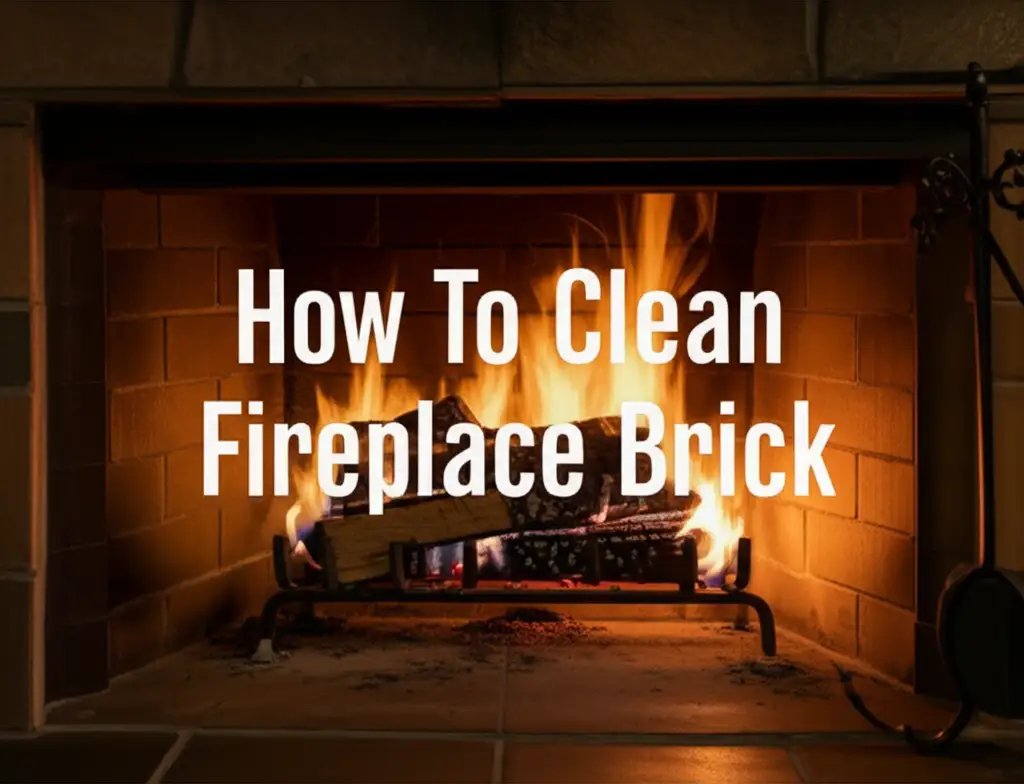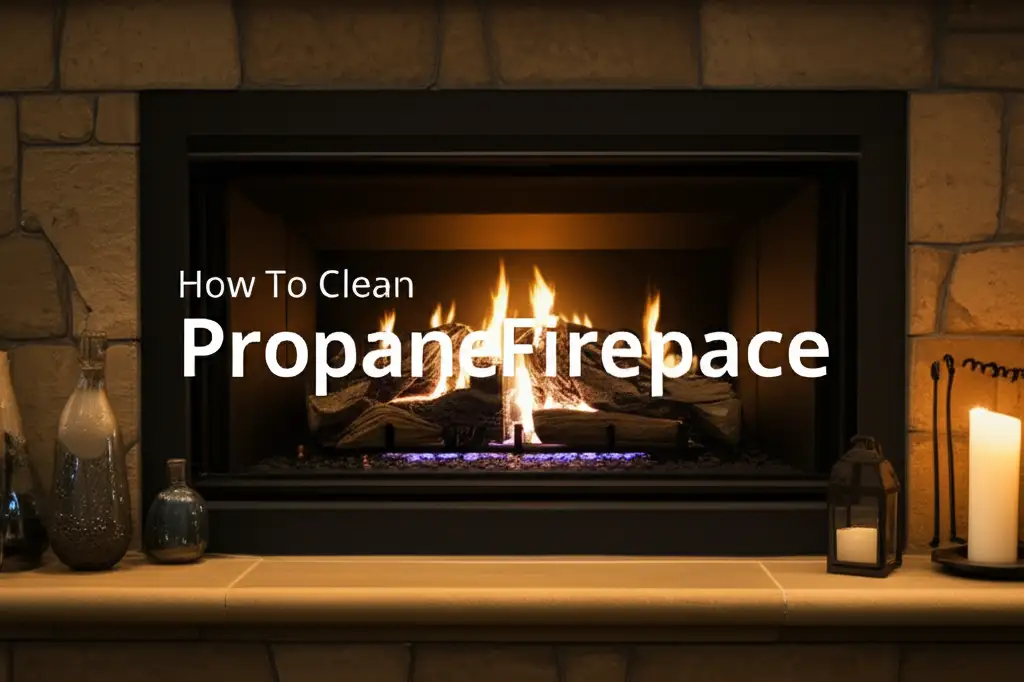· Home Maintenance · 19 min read
How To Clean Stucco Exterior
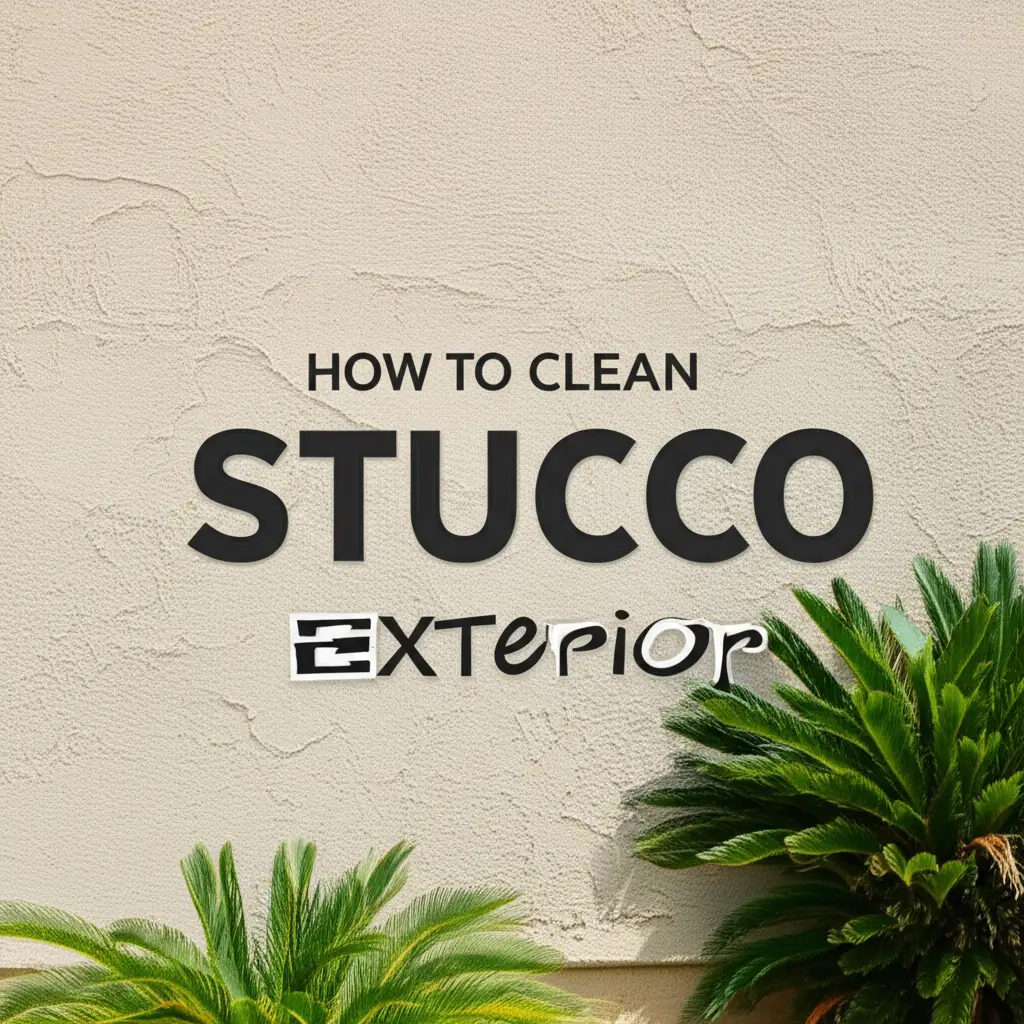
How to Clean Stucco Exterior: A Complete Guide
Your stucco exterior gives your home a unique look. It is durable and adds a lot of character. Over time, however, stucco can collect dirt, algae, or mold. This makes your home look less appealing. Knowing how to clean stucco exterior surfaces correctly keeps your home looking fresh. It also helps preserve the material itself.
This guide helps you understand the right way to clean your stucco. We will discuss safety measures you must take. We will also cover essential tools and effective cleaning solutions. You will learn about common stucco problems and how to fix them. My goal is to make stucco cleaning simple and safe for you.
Takeaway
- Assess stucco for damage before cleaning.
- Protect surroundings from cleaning solutions.
- Choose between soft washing or gentle pressure washing.
- Use appropriate, safe cleaning solutions for stucco.
- Rinse thoroughly to prevent residue buildup.
To clean stucco exterior, first inspect for cracks or damage. Then, pre-rinse the surface with water. Apply a stucco-safe cleaning solution using a soft brush or low-pressure sprayer. Gently scrub away dirt, mold, or mildew. Finally, rinse the area thoroughly with clean water.
Understanding Your Stucco Exterior
Stucco is a durable wall covering. It consists of cement, sand, lime, and water. This mix creates a hard, permeable surface. Stucco can last many years with proper care. It provides good insulation for your home.
Stucco’s porous nature can trap dirt and moisture. This makes it prone to issues like mold and mildew growth. Regular cleaning stops these problems. It keeps your stucco looking good and strong. You should know what type of stucco you have. This helps you choose the right cleaning method. Traditional stucco is different from synthetic stucco.
Types of Stucco
- Traditional Stucco: This stucco uses a cement-based mix. It is very hard and durable. It allows moisture to pass through it. This type needs gentle cleaning methods.
- Synthetic Stucco (EIFS): This system has multiple layers. It includes an insulation board. It also has a finishing coat. EIFS is less porous than traditional stucco. It requires very careful cleaning. Harsh methods can damage it.
Knowing your stucco type is important. It helps you avoid damage during cleaning. Always choose the gentlest method first. This protects your home’s exterior.
Essential Preparations Before Cleaning Stucco
Preparation is key for safe and effective stucco cleaning. You must protect your home and yourself. Taking time now saves you problems later. Start by checking the stucco for any damage.
Inspect your stucco closely for cracks or loose areas. Cleaning damaged stucco can worsen the problem. If you find damage, repair it before you clean. This prevents water from getting into your walls. Water inside walls can cause major issues.
Protecting Your Surroundings
Protect plants, windows, and light fixtures near the cleaning area. Cover delicate plants with plastic sheeting. Use drop cloths or tarps to shield shrubs and flowers. Move outdoor furniture and decorations away from the wall. This stops cleaning solutions from harming them.
Cover windows and doors with plastic. Secure the plastic with painter’s tape. This stops water and cleaning agents from getting inside. It also protects window glass from streaks. Always work on a calm day. Avoid windy conditions. Wind can spread cleaning solutions.
Gathering Your Tools and Supplies
You will need specific tools to clean stucco safely. A garden hose with a spray nozzle is essential. A soft-bristle brush is also very important. You might use a pump sprayer for applying solutions. For higher areas, an extension pole can help.
For cleaning solutions, you have options. Mild detergents work well for light dirt. For mold or algae, specific cleaners are needed. You may use a mix of water and bleach. Or you can use a vinegar solution. We will discuss specific solutions in a later section. Always wear safety glasses and gloves. You may also want long sleeves and pants. This protects your skin from cleaning agents.
Choosing the Right Cleaning Method: Soft Wash vs. Pressure Wash
Deciding how to clean your stucco involves choosing between soft washing and pressure washing. Each method has specific uses and risks. Your stucco type and the level of dirt guide this choice. My goal is to help you pick the safest, most effective approach for your home.
Soft washing is often the best choice for stucco. It uses low water pressure. A soft wash relies on specialized cleaning solutions. These solutions kill mold, algae, and mildew. They also break down dirt. The solution does most of the work, not the water pressure. This method is much safer for stucco. It prevents damage to the delicate surface.
Soft Washing Stucco
Soft washing is gentle and effective. It removes biological growths without force. This is important for stucco, as it can be easily damaged. I always recommend starting with a soft wash. It is less likely to cause problems. You can learn more about general exterior cleaning methods here: how to clean exterior of house.
Here are the steps for soft washing:
- Prepare the solution: Mix a stucco-safe cleaner with water. Follow the product’s directions. Many cleaners use a bleach-water mix or an oxygen bleach product.
- Wet the surface: Lightly spray the stucco with plain water. This helps the cleaning solution spread evenly. It also prevents the solution from drying too fast.
- Apply the solution: Use a garden pump sprayer to apply the cleaning solution. Start from the bottom and work your way up. This prevents streaking. Let the solution sit for 5-15 minutes. Do not let it dry on the stucco.
- Gentle agitation: For stubborn spots, use a soft-bristle brush. Gently scrub the area. Do not use stiff brushes. These can scratch the stucco.
- Rinse thoroughly: Rinse the stucco with a garden hose. Use a low-pressure nozzle. Start from the top and work down. Make sure all cleaning solution washes away. Any remaining solution can leave streaks or damage the stucco over time.
Gentle Pressure Washing
Pressure washing can be used on stucco, but with extreme caution. The high force of water can chip, crack, or even remove stucco. If you choose this method, use a very wide fan tip (e.g., 40-degree or higher). Keep the pressure setting very low. The goal is to rinse, not to blast.
- Low Pressure: Use a pressure washer at or below 1200 PSI. Some experts suggest even lower, around 600-800 PSI, for old or fragile stucco.
- Distance is Key: Hold the nozzle at least 18-24 inches from the stucco surface. Move the wand in sweeping motions. Do not hold it in one spot.
- Test a Small Area: Always test a small, hidden area first. Check for any damage or discoloration. If the stucco appears damaged, stop immediately. Switch to soft washing.
I personally avoid pressure washing stucco. The risk of damage often outweighs the benefits. Soft washing is usually enough. It gives a safer and equally effective clean.
Effective Cleaning Solutions for Stucco
Choosing the right cleaning solution is crucial for stucco. The wrong product can stain, discolor, or damage the surface. You want something powerful enough to clean, but gentle on the stucco. My experience shows that simple, effective solutions are best.
For general dirt and light stains, a mild detergent is often sufficient. For tougher problems like mold, mildew, or algae, you will need something stronger. Always test any solution in an inconspicuous area first. This helps ensure it does not harm your stucco.
Mild Detergent Solutions
A simple dish soap or laundry detergent can work for light cleaning. Mix it with water in a bucket. This mixture cuts through everyday grime and dust. It is safe for most stucco types.
- Preparation: Mix 1/4 cup of mild liquid laundry detergent or dish soap with 2 gallons of warm water. Stir until the soap dissolves.
- Application: Use a soft-bristle brush dipped in the solution. Gently scrub the dirty areas. For larger areas, you can use a pump sprayer to apply the solution. Let it sit for a few minutes.
- Rinsing: Rinse the stucco thoroughly with a garden hose. Ensure all soap residue is gone. Remaining soap can attract more dirt.
This method is good for routine maintenance. It helps keep your stucco looking clean between deeper washes.
Tackling Mold, Mildew, and Algae
Mold and algae are common on stucco, especially in humid climates. These growths can cause discoloration. They can also damage the stucco over time. You need a solution that kills these organisms. Bleach-based solutions are very effective for this. Vinegar solutions also work as a natural alternative for mold. You can learn more about tackling mold with vinegar here: how to clean mold with vinegar.
Bleach-Based Solution
A diluted bleach solution is a powerful mold and algae killer. It brightens the stucco surface. Use it with caution, as bleach can harm plants and other surfaces.
- Mix: Combine 1 part household bleach with 3 parts water. For example, 1 gallon of bleach to 3 gallons of water. Always add bleach to water, not water to bleach.
- Safety: Wear gloves, eye protection, and old clothes. Protect nearby plants and surfaces. You may want to pre-wet plants with water. This gives them a protective layer.
- Application: Apply the solution with a pump sprayer. Cover the affected areas. Let it sit for 10-15 minutes. Do not let it dry on the stucco. For tough spots, a soft brush can help.
- Rinsing: Rinse the stucco thoroughly with a garden hose. Make sure all bleach solution is completely washed away. This prevents any damage or discoloration.
Vinegar Solution
For a more natural approach, vinegar works well for mold and mildew. Vinegar is acidic. It breaks down these growths. It is safer for plants than bleach. If you are cleaning mold off walls, vinegar is a good option: how to clean mold off walls.
- Mix: Use a solution of equal parts white vinegar and water.
- Application: Spray the vinegar solution directly onto the mold or mildew. Let it sit for 30 minutes to an hour. The longer it sits, the more effective it is.
- Scrub and Rinse: Scrub gently with a soft brush. Then, rinse the area well with clean water.
Vinegar may not be as fast-acting as bleach for severe cases. But it is a good, eco-friendly choice. It is also suitable for general exterior house cleaning on various surfaces: how to clean exterior of house.
Step-by-Step Stucco Cleaning Process
Cleaning your stucco exterior involves a few clear steps. Following them in order ensures a good result. It also helps keep you and your home safe. I find breaking it down makes the job feel less daunting.
- Assess and Prepare: Before anything else, look at your stucco. Check for cracks, holes, or loose pieces. If you find damage, fix it first. Cleaning can make existing damage worse. Next, protect your surroundings. Cover plants, windows, and anything you don’t want wet or sprayed. Move furniture away. Put on your safety gear: gloves, eye protection, and long clothing.
- Pre-Rinse: Use a garden hose with a standard nozzle. Lightly spray down the entire stucco surface you plan to clean. This removes loose dirt and dust. It also helps the cleaning solution spread evenly. Start from the top of the wall and work your way down.
- Apply Cleaning Solution: Choose your cleaning solution based on the problem. For general dirt, use mild detergent. For mold or algae, use a bleach or vinegar solution. Use a pump sprayer for easy application. Apply the solution from the bottom of the wall upwards. This prevents streaks. Let the solution sit for 5 to 15 minutes. Make sure it does not dry on the stucco. Reapply if needed to keep it wet.
- Gentle Scrubbing (If Needed): For stubborn dirt or heavy mold, use a soft-bristle brush. Gently scrub the affected areas. Do not use stiff brushes or apply too much pressure. Aggressive scrubbing can damage the stucco’s finish.
- Thorough Rinse: This is a crucial step. Use your garden hose again. Rinse the stucco thoroughly with clean water. Start from the top of the wall and work down. Make sure every bit of cleaning solution washes away. Residue can leave streaks or cause long-term damage. Take your time with this step. Rinse until the water runs clear.
- Inspect: After rinsing, inspect the stucco. Check if all dirt and stains are gone. If some spots remain, you can repeat the process on those specific areas. Do not try to clean too much at once. It is better to do smaller sections thoroughly.
By following these steps, you can achieve a clean stucco exterior. It will look fresh and beautiful. Remember, patience and proper technique give the best results.
Dealing with Specific Stucco Issues
Stucco can face different problems. Dirt and general grime are common. But sometimes, you see specific issues. These include rust stains, efflorescence, or stubborn organic growth. Each needs a slightly different approach. Knowing how to handle these makes your cleaning more effective.
Rust Stains on Stucco
Rust stains often come from metal fixtures or sprinklers. They leave orange or reddish marks. Regular cleaning solutions may not remove them. You need an acid-based cleaner for rust.
- Product: Look for a rust remover safe for masonry. Oxalic acid-based cleaners work well. Always read the product label carefully.
- Application: Apply the rust remover directly to the stain. Follow the product’s directions for dwell time.
- Rinse: Rinse thoroughly with clean water. Rust removers can etch stucco if left on too long. Always test on an hidden spot first.
Be very careful with acidic cleaners. They can damage plants and other materials.
Efflorescence Removal
Efflorescence looks like a white, powdery residue. It happens when water moves through masonry. It brings salts to the surface. As the water evaporates, the salts remain.
- Mild cases: Often, a stiff brush and water can remove efflorescence.
- Stubborn cases: Use a diluted solution of white vinegar or a specialized efflorescence remover.
- Application: Apply the solution. Let it sit for a few minutes. Scrub with a stiff brush.
- Rinse: Rinse well with clean water. Address the source of water penetration to prevent recurrence.
Efflorescence is a sign of moisture. Check for leaks in your gutters or cracks in the stucco.
Tackling Stubborn Algae and Mildew
Sometimes, regular bleach or vinegar solutions are not enough. Very heavy algae or mildew growth can stick firmly to stucco. These growths are more than just dirt. They are living organisms.
- Stronger Solution: Increase the concentration of your bleach solution (e.g., 1 part bleach to 2 parts water). Or use a dedicated outdoor mildew cleaner.
- Increased Dwell Time: Let the solution sit longer, up to 30 minutes. Do not let it dry. Keep reapplying if needed.
- More Scrubbing: Use a soft-bristle brush with more elbow grease. Focus on the affected areas.
- Repeat: You may need to repeat the application and scrubbing process. For severe cases, a second treatment works best.
For organic growths, prevention is better. Keep trees and shrubs trimmed away from your stucco. Ensure good drainage around your home. Proper air circulation also helps. Remember that cleaning mold in other areas, such as a shower, uses similar principles of breaking down the organic matter: how to clean mold in shower.
Maintaining Your Stucco for Long-Term Cleanliness
Cleaning stucco is not a one-time job. Regular maintenance keeps your home looking great. It also prevents major cleaning tasks later. I find that consistent small efforts make a big difference. Long-term cleanliness comes from smart habits.
Regular inspections are a simple first step. Walk around your home once or twice a year. Look for new dirt, stains, or signs of mold. Catching problems early makes them easier to fix. Small spots of mildew are simpler to clean than large patches.
Regular Cleaning Schedule
- Annual Rinse: Give your stucco a light rinse with a garden hose once a year. This removes surface dust and grime. It stops dirt from building up and staining the stucco.
- Spot Cleaning: Address small stains or mildew spots as soon as you see them. Use a mild detergent or diluted vinegar. This prevents them from spreading.
- Deep Clean: Plan a deep clean every 2-5 years. The frequency depends on your climate and local environment. Humid areas or homes under trees might need more frequent deep cleaning.
Consistency helps your stucco stay clean and attractive. It also protects your investment.
Preventing Future Stains and Growth
Prevention is always better than cure. You can take steps to reduce future stucco problems. These actions minimize dirt and moisture issues. Less moisture means less mold and algae.
- Trim Landscaping: Keep trees, shrubs, and vines trimmed away from your stucco walls. Plants can hold moisture against the surface. They also drop leaves and debris. This creates a dirty, damp environment.
- Improve Drainage: Ensure water drains away from your foundation. Check your gutters and downspouts. Make sure they are clear and direct water away from the house. Standing water near stucco promotes growth.
- Seal Cracks: Repair any cracks or holes in your stucco promptly. Cracks allow water to enter the wall system. This can lead to internal moisture issues. Water trapped inside can cause mold and efflorescence.
- Consider a Sealer (Carefully): Some homeowners apply a clear, breathable sealer to stucco. This can help repel water and prevent stains. If you decide to do this, choose a sealer made for stucco. It must allow the stucco to breathe. Improper sealing can trap moisture inside. Always consult a stucco professional before applying a sealer.
By following these maintenance tips, your stucco will stay cleaner longer. This saves you time and effort in the long run. It also protects the integrity of your home’s exterior.
When to Call a Professional Stucco Cleaner
While cleaning stucco yourself is often possible, some situations require professional help. Knowing when to call an expert saves you time, prevents damage, and ensures a proper clean. My advice is to recognize your limits.
Significant Stucco Damage
If your stucco has extensive cracks, large holes, or areas that are crumbling, avoid cleaning it yourself. Water can get into damaged areas and cause more harm. A professional will assess the damage first. They can repair the stucco correctly. Then, they can clean it safely. Trying to clean severely damaged stucco can worsen the problem.
Persistent or Deep-Seated Stains
Some stains are very difficult to remove. Deep-seated oil stains, paint spills, or severe rust marks might not come out with home methods. Professionals have specialized cleaners and equipment. They can often remove stains that ordinary solutions cannot. They also know how to apply these strong cleaners without harming the stucco.
Widespread Mold or Algae Infestation
If your stucco is covered in a thick layer of mold, mildew, or algae over a large area, it is a big job. This often means the problem is deeply ingrained. A professional cleaner has commercial-grade soft washing equipment. They can apply and rinse solutions more effectively. They also ensure the spores are completely killed. This prevents quick regrowth.
Height and Safety Concerns
Cleaning high walls or multi-story homes can be dangerous. Working on ladders or scaffolding requires experience and safety gear. If you are not comfortable or lack the right equipment, hire a pro. Professionals have the tools and training to clean at height safely. Your safety is most important.
Lack of Time or Equipment
Sometimes, you just do not have the time or the right tools. Renting equipment can be costly and inconvenient. If you prefer to save time or avoid buying specific tools, a professional service is a good option. They arrive with everything needed. They complete the job efficiently.
Professional stucco cleaners understand different stucco types. They know the best cleaning agents and methods. They also have insurance. This protects you in case of any accidental damage. For large or complex cleaning tasks, hiring an expert is a wise decision.
FAQ Section
How often should I clean my stucco exterior?
You should rinse your stucco with a garden hose annually to remove loose dirt. A deeper clean, targeting mold or stains, is typically needed every 2 to 5 years. This frequency depends on your local climate and how quickly dirt or organic growth appears on your home.
Can I use a pressure washer on my stucco?
You can use a pressure washer, but with extreme caution. Use a very low-pressure setting, under 1200 PSI, and a wide fan tip. Keep the nozzle far from the stucco surface. Soft washing is generally safer and recommended for most stucco types to avoid damage.
What is the best solution for mold on stucco?
A diluted bleach solution (1 part bleach to 3 parts water) effectively kills mold and brightens stucco. For a natural option, a 50/50 mix of white vinegar and water also works well. Always test any solution in a small, hidden area first to check for discoloration.
How do I remove rust stains from stucco?
To remove rust stains, use an oxalic acid-based rust remover designed for masonry surfaces. Apply it directly to the stain following product instructions. After it sits, rinse the area thoroughly with clean water. Be careful, as these cleaners can be strong.
Is it safe to clean stucco in direct sunlight?
It is not ideal to clean stucco in direct sunlight. The sun can cause cleaning solutions to dry too quickly. This leaves streaks or spots on the stucco. It is best to clean stucco on a cloudy day or when the area is in shade. This allows the solution to work properly.
What if my stucco is painted?
If your stucco is painted, you should be extra gentle. Strong cleaners like bleach might strip the paint or cause fading. Use only mild detergents and soft washing methods. Always test a small, hidden area first to ensure the cleaner does not harm the paint.
Conclusion
Cleaning your stucco exterior is a vital part of home maintenance. It keeps your home looking beautiful. It also helps protect the stucco itself. We have discussed how to assess your stucco. You now know the best ways to prepare for cleaning. You understand the differences between soft washing and gentle pressure washing. My aim has been to provide clear steps for a safe and effective stucco cleaning process.
Remember to choose the right cleaning solution for your needs. Address specific issues like mold or rust with appropriate products. Regular cleaning and preventative steps are key for long-term cleanliness. By following these guidelines, you can maintain your stucco effectively. If the job feels too big or complex, consider hiring a professional. Take action today to give your stucco the care it deserves. Your home will thank you with a fresh, clean look.
- stucco cleaning
- exterior house cleaning
- stucco maintenance

